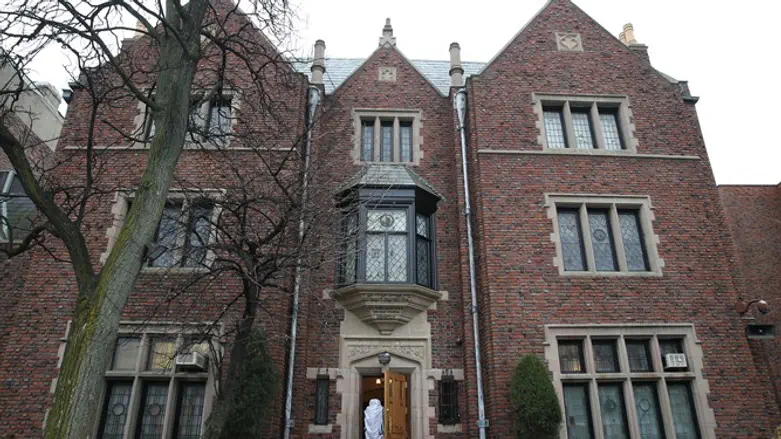
For an introduction to what Tanya is about, click here.
Note: Previous lectures can be accessed by means of the link below, but each lecture stands on its own.
Tanya/Shaar Hayichud V’haEmunah, Chapter 7, Class 1.
The Alter Rebbe explained in the previous chapters that the Scriptural statement that “in the heavens above and upon the earth below there is none other,” is not intended to negate the existence of another god. Rather, it tells us that Divine Unity is such that there is no true existence other than G‑d, for all created beings are completely nullified in relation to Him and are united with Him. This is not perceived by them nor manifest in them, only because of the tzimtzum which conceals the Divine life-force that continuously brings about their existence ex nihilo. Being unable to perceive this life-force, they consider themselves to be independently existing entities.
This concealment, of course, applies only to created beings but not to their Creator. From the Divine perspective there is no concealment whatever, inasmuch as Havayah and Elokim are truly one: the concealment effected by Elokim thus does not act as a concealment for Havayah.
The Alter Rebbe will now explain how the above enables us to understand the teaching of the Zohar that Shema Yisrael is “higher-level Unity” and Baruch shem is “lower-level Unity.”
Were Divine Unity merely to signify the existence of one G‑d, it would be impossible to speak of higher and lower levels of Unity. According to the above explanation, however, that Divine Unity means the nullity of created beings and their unity with G‑d, it is indeed possible to speak of two diverse levels of Unity.
In this sense, “higher-level Unity” refers to the Divine faculty of creative speech (otherwise known as Malchut), considered at the stage in which it is still found within its source. By way of analogy, the seminal letters of a person’s speech are first encapsulated within his thought and emotions, which will ultimately be responsible for his subsequent speech. (The Rebbe notes that “this was explained in Part I, chs. 20-21.”)
The same is true Above: When Supernal creative speech is at the stage in which it is still included within the Supernal attributes — which, being infinite, are too lofty to serve as a source of creation, for creation is inherently limited to space and time — creation as it exists in its source is united with G‑d at the higher level of Unity. Its manner of nullification is then similar to the nullification of the sun’s rays as they are found within the sun-globe.
When, however, the Divine creative power of speech (or Malchut), after undergoing a process of tzimtzumim, descends to a level at which it is able to serve as a source for creation, then the term “lower-level Unity” applies. Created beings at this level cannot be said to be completely and utterly nullified. For inasmuch as this level becomes the actual source of created beings, they must perforce have some measure of identity in relation to it. Although this level, too, is pervaded by the Ein Sof-light which unites with the Divine faculty of creative speech, this unification is nevertheless one of “lower-level Unity,” wherein created beings are seen to have some measure of existence — albeit a nullified form of existence, but existence nonetheless.
ובזה יובן מה שכתוב בזהר הקדוש דפסוק שמע ישראל הוא יחודא עילאה, וברוך שם כבוד מלכותו לעולם ועד הוא יחודא תתאה
With the above in mind, we may now understand the statement in the holy Zohar, that the verse Shema Yisrael is yichuda ila‘ah (“higher-level Unity”), and that the verse Baruch shem kvod malchuto leolam vaed is yichuda tata’ah (“lower- level Unity”).
The connection between the last-mentioned verse and Divine Unity is now explained:
כי ועד הוא אחד בחילופי אתוון
For1 vaed is equivalent to echad through the substitution of letters.2
The alef of echad interchanges with the vav of vaed, since both letters belong to the same group of letters, viz., alef, hei, vav, yud (which, the Rebbe notes, are known as otiyot hahemshech, the “connective letters”). The chet of echad interchanges with the ayin of vaed, since they share the same source (motza) in the organs of speech, and thus both belong to the category of “guttural letters,” viz., alef, hei, chet, ayin. Finally, the large daled of echad transposes into the small daled of vaed.
______
FOOTNOTES
1. “A letter of mine dealing with this substitution appears in Kovetz Lubavitch.” ( — Note of the Rebbe). This letter has since been reprinted in Teshuvot U‘Biurim (Kehot, N.Y., 1974; Heb.), Section 13, p. 62.
2. “As stated in Zohar II, 135a.” ( — Note of the Rebbe).